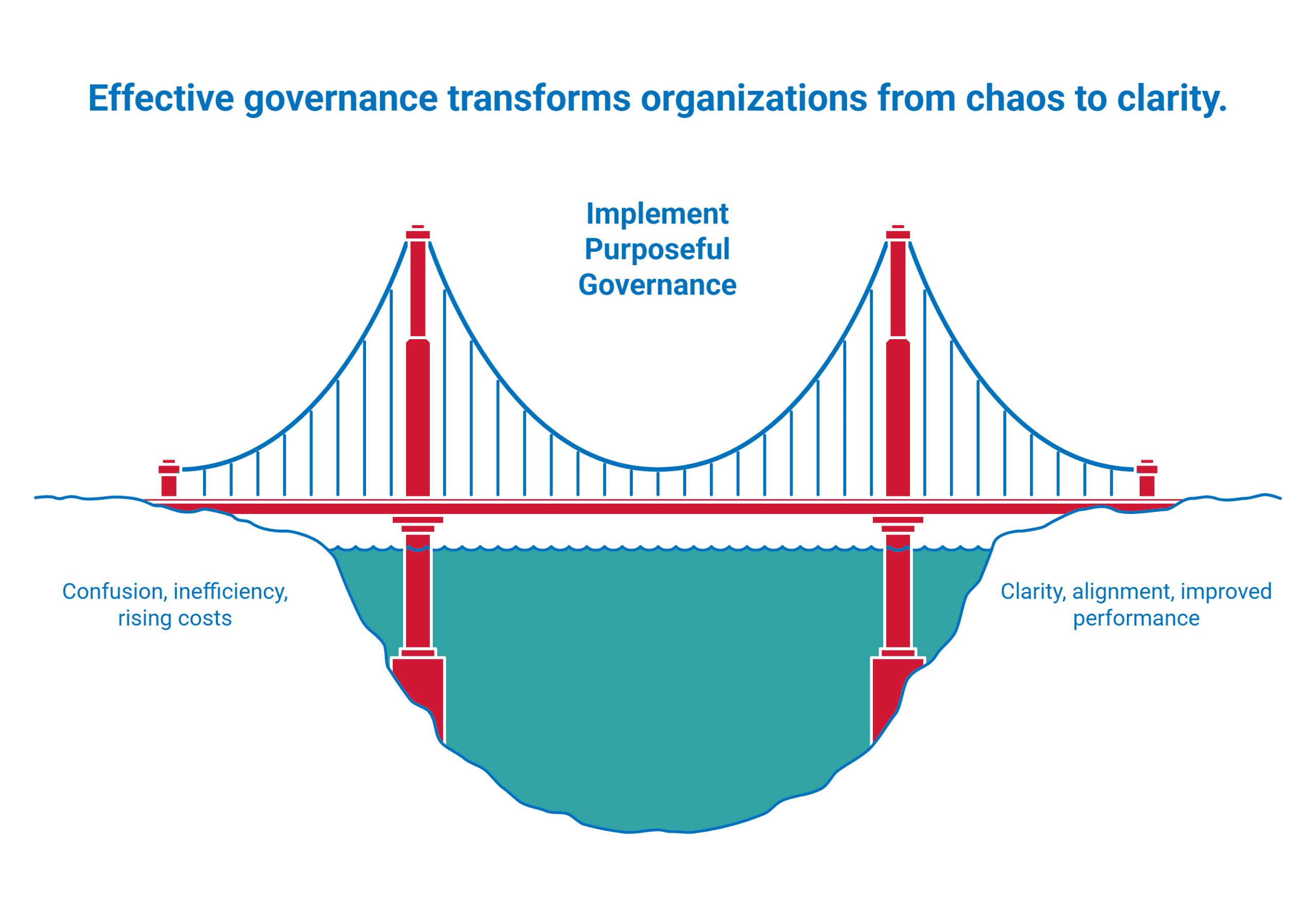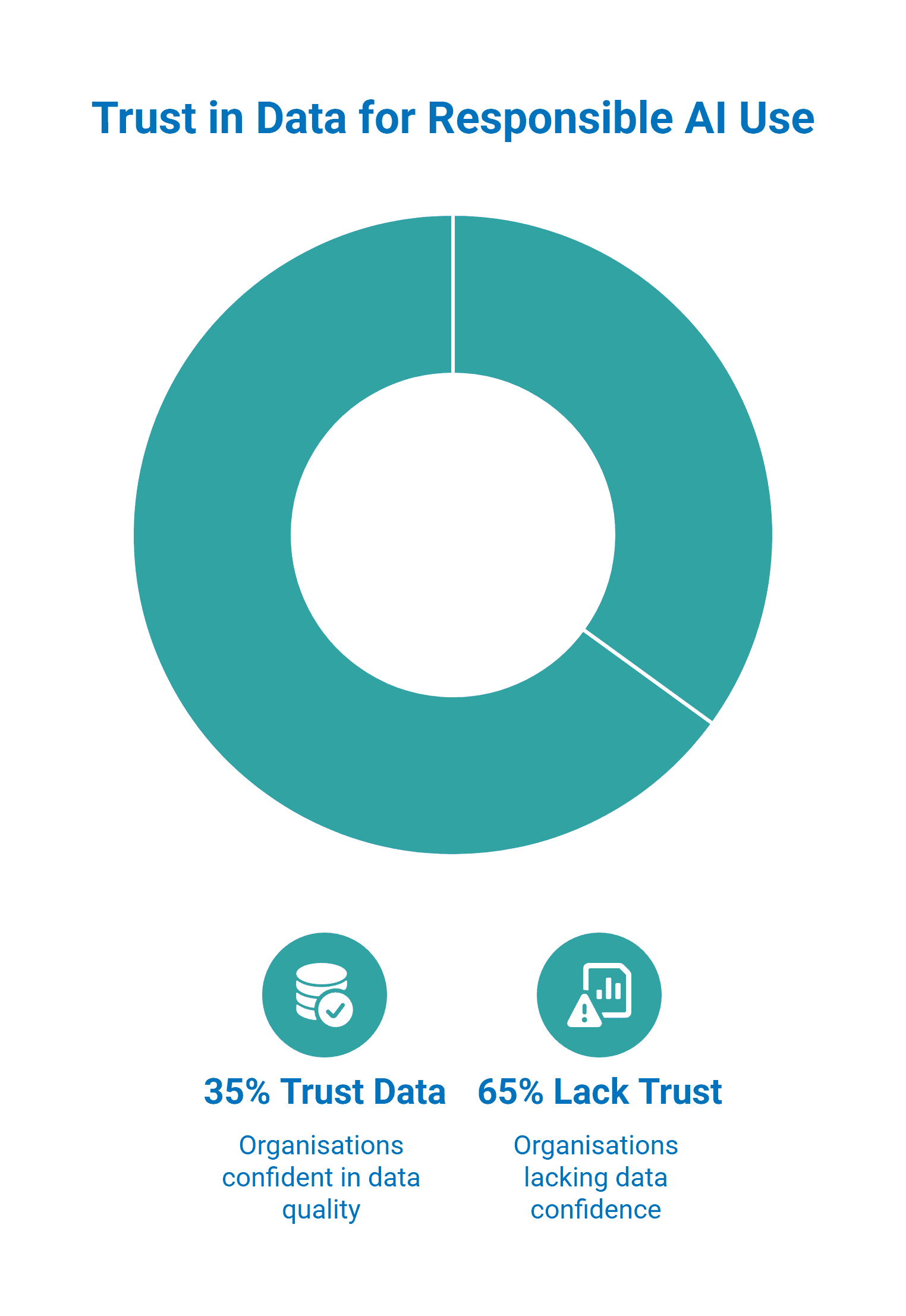In a world of rising business risk and shrinking margins, no leader wants to invest in something they can’t ‘see’. Yet governance is a lot like clean air – you only notice it when it’s missing. When it’s neglected, organisations choke on confusion, inefficiency, and rising cost. But when it’s managed with purpose, governance becomes a source of strength: clarity improves, teams align, and trust accelerates business performance.

Governance as a Human and Business Imperative
At the DSAG 2025 Congress recently, one message stood out to us more than any product announcement or roadmap forecast: Connection starts in the small cosmos. Real transformation doesn’t begin with technology – it begins between people. In side conversations by the juice bar and informal exchanges across stands, leaders kept circling the same truth: trust is now the most valuable business currency, and governance is how it is earned.
Compliance used to be perceived as a necessary cost – a defensive shield to avoid penalties or satisfy auditors. Today, that mindset is outdated in two significant ways: Not only can well managed data bring significant value, bad data costs businesses $12.9 million annually, according to Gartner.

This article explores what we call Compliance with Purpose – a leadership mindset that makes governance human, meaningful, and commercially relevant. Over the next sections, we’ll explore four pillars that turn governance into trust and trust into results: Connection, Responsibility, Purpose, and Balance. Most importantly, we’ll show why putting governance at the core of business strategy is not just a smart decision – it’s a competitive advantage with direct impact on revenue, efficiency, and resilience.
Connection – Governance That Supports People and Performance
Governance doesn’t start with policies or systems – it starts with people. Before a single framework or process can succeed, teams need to understand and be fully on board. Without that foundation, governance feels like bureaucracy.
This makes connection the first pillar of purposeful governance, because people will tend to follow rules they understand and believe in. When expectations are unclear or access rights inconsistent, frustration grows and productivity falls. Teams lose time navigating confusion, projects stall, and business value is delayed.
This is where clarity becomes a business advantage, and where governance tools like DAGS by wikima4 create measurable value. With DAGS, connection means clarity: everyone knows who has access to what, and why. Instead of generic access profiles and static role templates, DAGS creates job roles that reflect real work – adapted to changing teams and responsibilities. This reduces friction between departments because access aligns to purpose, not assumption.
DAGS also supports efficient onboarding and mobility. When new employees join or roles evolve, access can be granted quickly and safely, guided by predefined governance logic. That means less manual admin work, fewer delays waiting for approvals, and new team members can get to work faster. In business terms, connection reduces time-to-productivity.
Connection also reduces risk. When roles and access are clearly governed, shadow IT and unauthorised workarounds disappear. Teams no longer need to “find their own way” to get things done because governance enables them instead of blocking them.
It’s not about control, but rather collaboration, creating trust between people, systems, and leadership. And trust accelerates performance. As Deloitte Insights reported, 79% of employees who trust their employer feel motivated to work better, harder, and with more job satisfaction.

Responsibility – Turning Accountability into Business Action
We’ve shown how connection builds trust but trust alone isn’t enough – it must be backed by accountability. That’s where the second pillar comes in: Responsibility.
When nobody owns decisions around access and data, responsibility becomes blurred, and compliance quickly fragments. Teams assume “someone else” is accountable, and risks slip through the cracks. This is why leadership in data governance matters. When responsibility is unclear or scattered across departments, governance breaks down, work is duplicated, and data quality suffers – all of which increase operational cost and risk.
This is where DAGS by wikima4 turns accountability into action. Every access right has a defined owner. Every role has a clear purpose. Every activity can be traced. In other words, clear data ownership and access transparency, which drives measurable productivity gains.
This builds audit-ready accountability into daily work, reducing the effort required during compliance reviews. No last-minute scrambles to justify access decisions with a regulator breathing down your neck. The governance model explains itself. The result: less rework, fewer delays, and faster reporting cycles.
Even more importantly, responsibility improves data quality. When people know why they have access and how their role contributes to business outcomes, they will be inclined to treat data with greater integrity, which can only lead to cleaner data and better business decisions.
So, in many ways, responsibility is where governance becomes measurable – increasing productivity, reducing error risk, and cementing operational trust.
Purpose – Turning Compliance into Competitive Value
If responsibility creates structure, what gives that structure meaning is purpose – the why behind compliance and our third pillar. Without purpose, governance feels like enforcement. With it, governance becomes a source of value that protects the business and enables growth.
Many organisations still view compliance through the narrow lens of avoiding fines or satisfying audits. But when governance is purpose-led, the benefits become tangible. Companies gain more than reduced risk – they build trust capital. Customers, regulators, and partners see integrity in action. Internally, employees feel part of something that matters, increasing engagement and retention. And at the top line, that trust translates into measurable value: stronger brand reputation, fewer costly missteps, and greater resilience under scrutiny.
Through DAGS by wikima4, compliance becomes purpose-driven by design. Every access control, every workflow, and every governance rule reflects a clear business reason. The system provides the structure for ethical, auditable, and purposeful data use – not because regulation demands it, but because it makes business sense.
In today’s economy, brand integrity is as valuable an asset as any on the balance sheet. A single compliance lapse can lead to millions in fines, contract losses, and customer churn, and there are plenty of high profile examples to back this up.
So, contrary to popular opinion, compliance doesn’t have to slow business down. When it is aligned with organisational purpose, it becomes a competitive differentiator that builds both trust and growth.
Balance – Where Governance, AI and Business Value Meet
Balance has never been more urgently needed than in the era of AI. What was once the stuff of sci-fi comics has moved from boardroom curiosity to business expectation, with organisations using it not just to automate tasks, but to accelerate decisions and unlock new value.
But AI also raises the stakes of governance. For all the benefits it brings, it doesn’t remove risk – it multiplies it. Without the right controls, AI will consume poor-quality or biased data and amplify flawed outcomes at scale. With the right controls, AI becomes a strategic asset: fast, explainable and trusted.
This is why AI is now such a challenge for leadership. To implement it safely, you must be able to answer three questions with confidence:
- Can we trust the data feeding our AI models?
- Is our AI explainable and compliant by design?
- Do we retain control over risk, access, and accountability?
Without governance, the answer to all three is no.

This is where balance becomes the fourth pillar of purposeful compliance – the balance between innovation and control, between automation and human judgement, between speed and safety. DAGS by wikima4 is designed for exactly this reality. It ensures that agility never comes at the expense of oversight.
With DAGS:
- Data is governed before it reaches AI pipelines
- Access logic and approvals remain explainable
- Controls are embedded without slowing execution
- Business users stay empowered – safely
High-quality, governed data is the deciding factor in AI success. According to Accenture, only 35% of organisations trust their own data enough to use AI responsibly. That trust gap is a governance problem – and DAGS helps close it by making governance consistent, centralised, and human-aligned.

In fact, far from being restrictive, true governance enabling – improving the quality of data and giving leaders the confidence to move faster, knowing risks are controlled and decisions are defensible.
Turning Governance into Advantage
Across industries, a clear pattern is emerging – businesses that design governance as a strategic capability outperform those that treat it as a compliance requirement. Governance is not paperwork; it’s an engine of trust with the power to drive productivity, resilience and growth.
The four pillars we’ve explored – Connection, Responsibility, Purpose and Balance – aren’t abstract ideas. They are practical foundations that reduce friction, prevent risk from becoming cost, improve data quality, and accelerate decision-making with confidence.
This is what we mean by compliance with purpose: governance that fuels performance.
If you’d like to explore how DAGS by wikima4 can help you build a governance framework fit for real-world complexity – one that connects people and access, embeds accountability and keeps control in the hands of leadership – we’d love to talk. Together, we can transform governance from overhead into advantage by making it clear, scalable and explainable.

